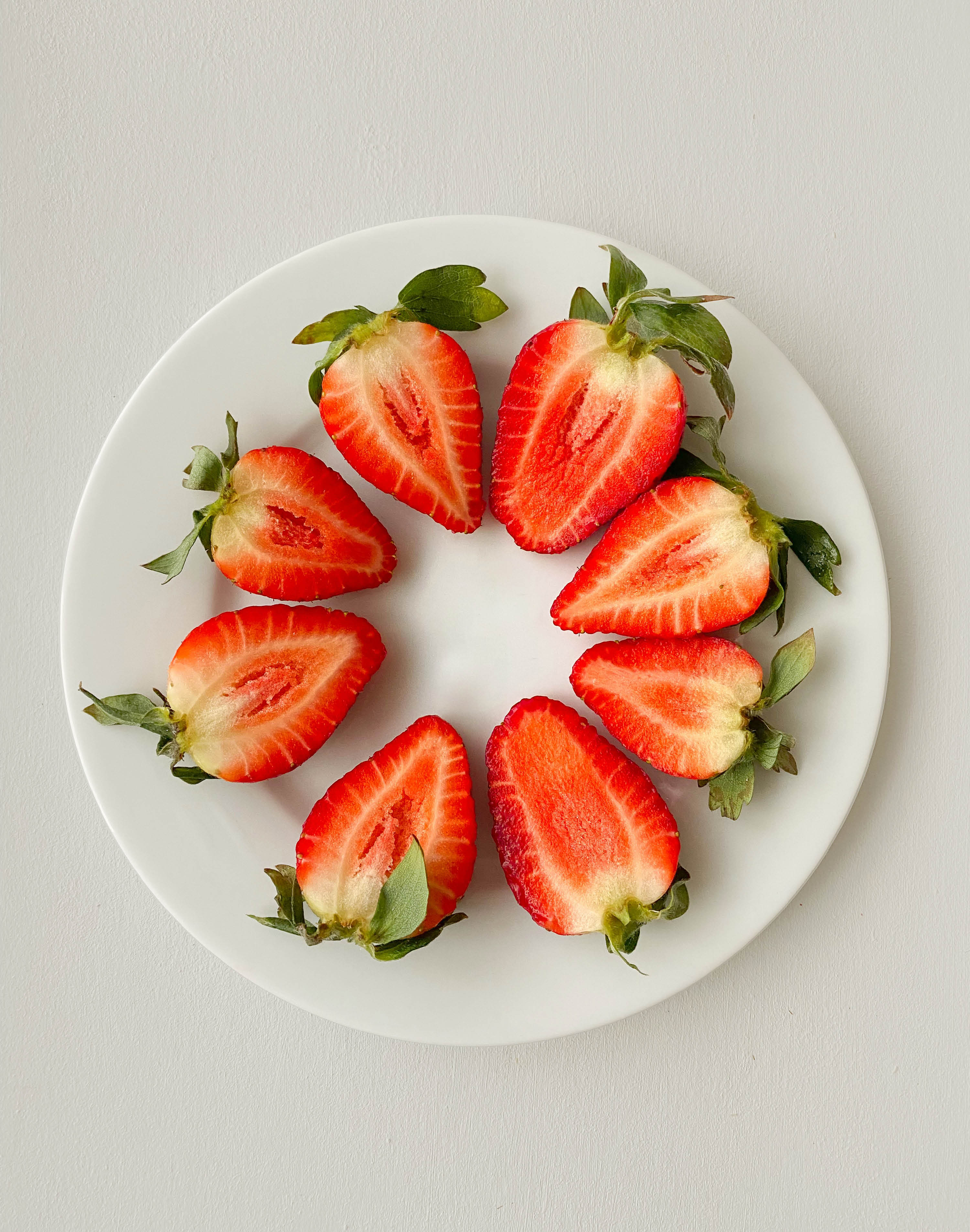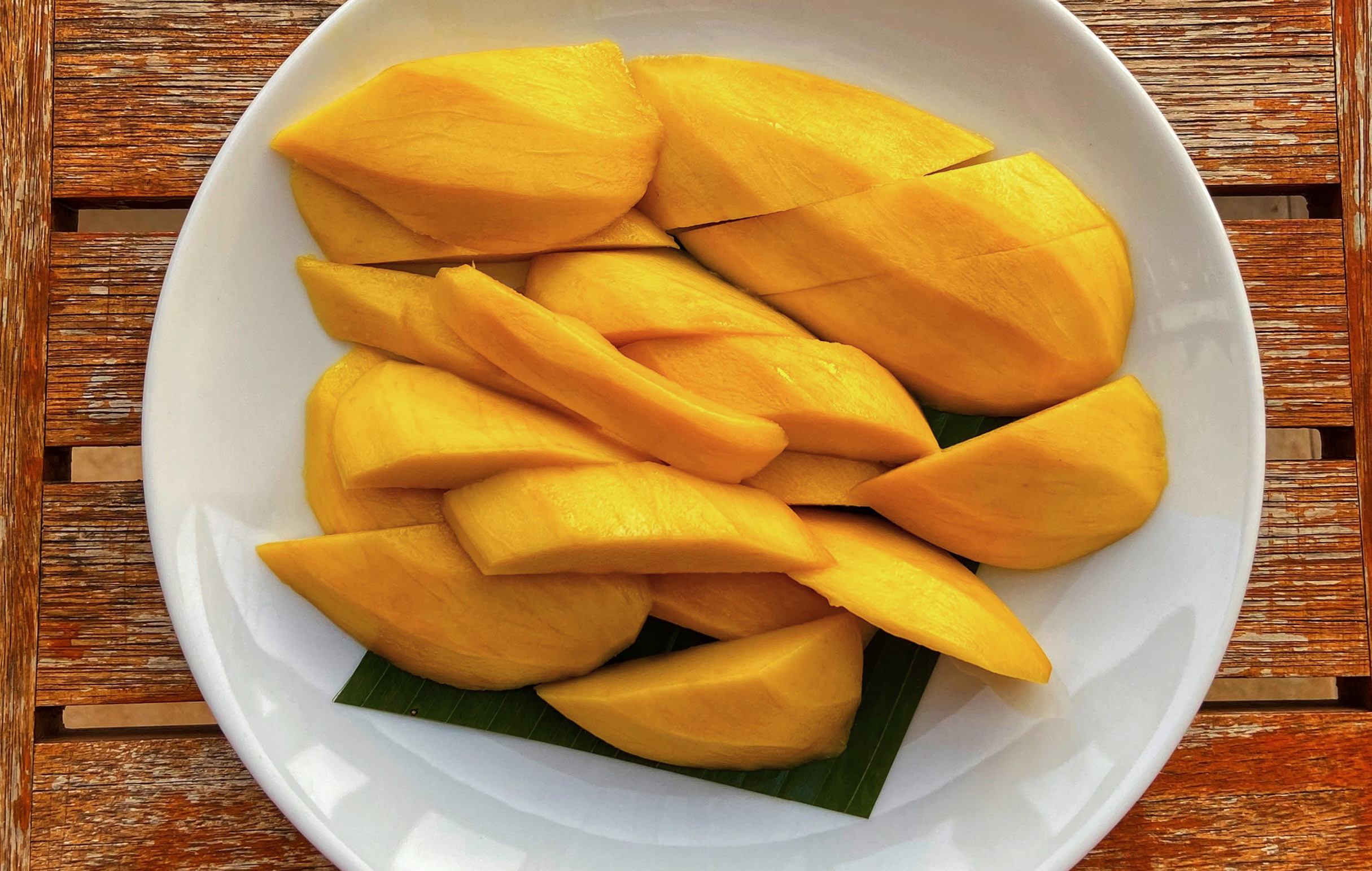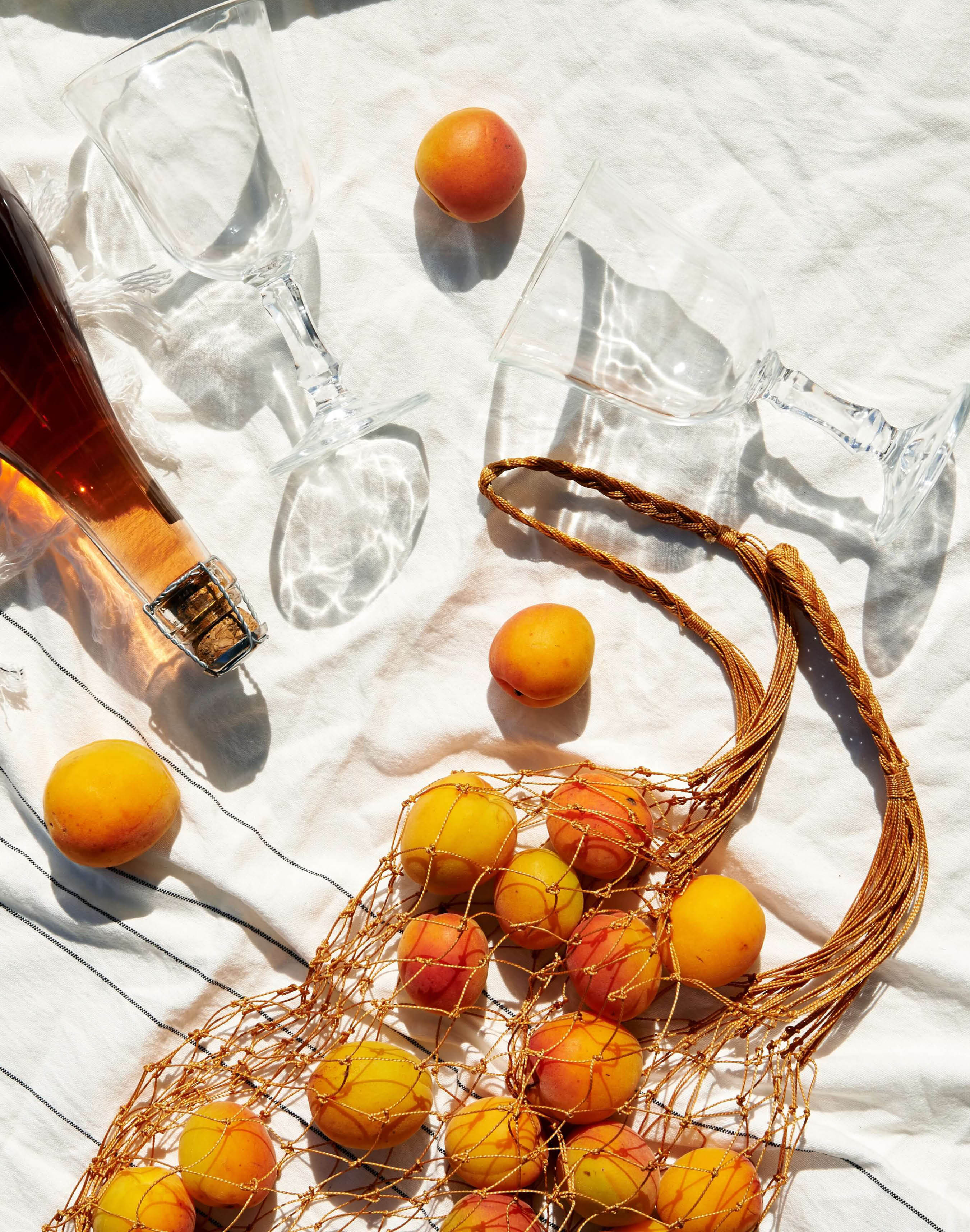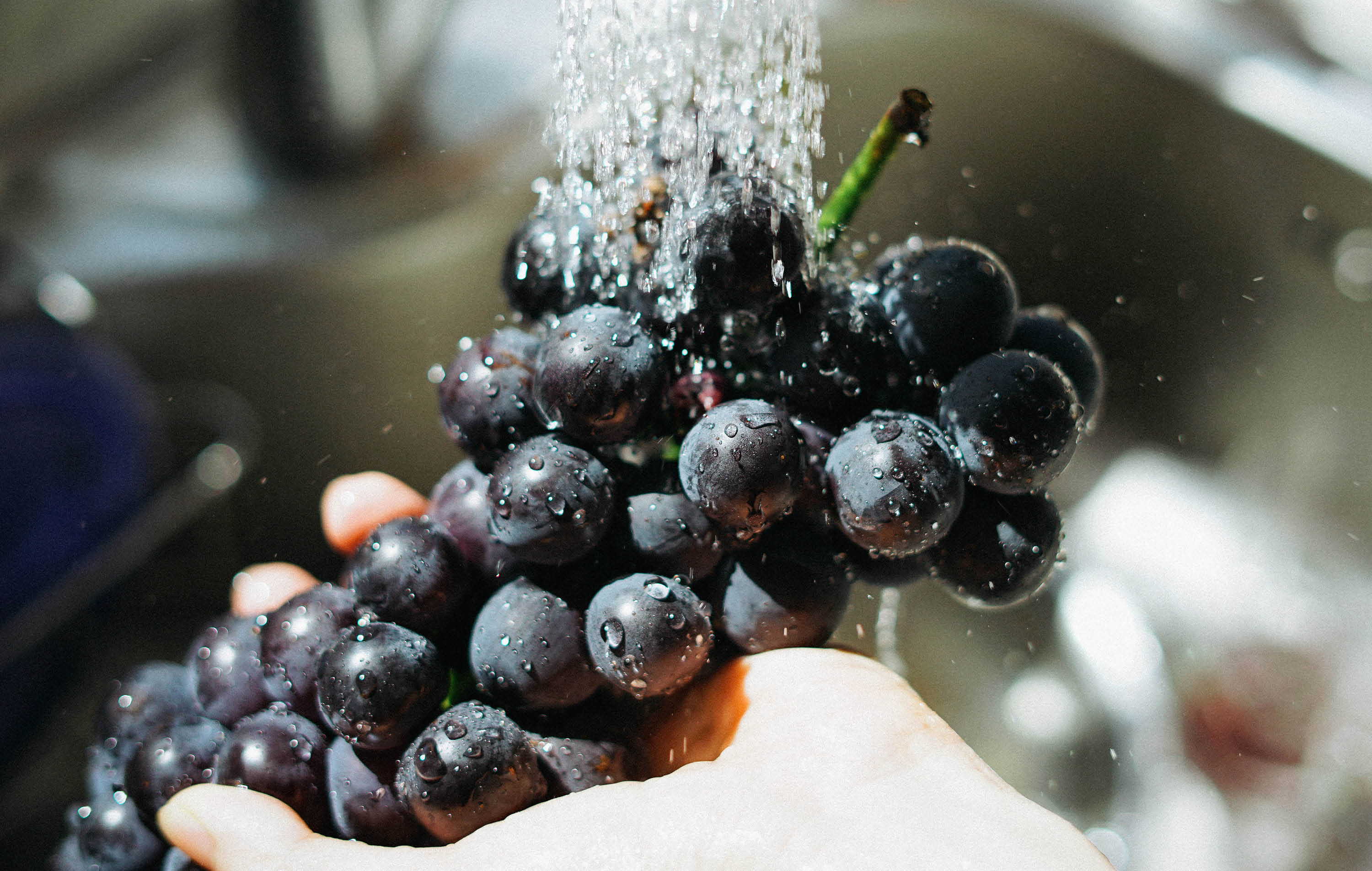Did you know: fruits
13•07•2022
Rich in minerals, vitamins and antioxidants, fruits are valuable allies in reducing the risk of cancer, obesity and cardiovascular disease. They are also a significant source of fibre, calcium and potassium.

Strawberry
Did you know that a cup of strawberries is the recommended daily intake of vitamin C?
Vitamin C is a powerful antioxidant that works quickly by neutralizing free radicals that are harmful to health. This fruit also reduces the risk of developing cardiovascular diseases, strengthens the immune system and even helps to make teeth white! Choose strawberries that are bright, shiny red with no trace of green or white. To preserve them, the ideal is to keep them in the refrigerator without washing or stemming them. If you want to freeze them, pass them under water, sponge them and then remove the tails. Spread them on a baking sheet and leave them in the freezer until firm. Then place them in a freezer bag, indicating the date, they will keep for 6 months.
Blueberries
Nowadays there are more than a hundred species, in Quebec, Saguenay-Lac-Saint-Jean is known as the kingdom of blueberries so much this little fruit grows there in abundance!
Did you know that blueberries are 85% water?
This explains their low energy content, i.e. 50 calories per 100 grams. Several studies suggest that the consumption of this small blue fruit would help counter diabetes, neurodegenerative diseases and certain cancers. Whether fresh, frozen or in juice, blueberries contain an important source of vitamin C and are champions in terms of antioxidants. The blueberry is native to North America, it was first harvested by the natives who preserved it in animal fat or dried it to consume it throughout the winter. These little berries were a source of vitamins and energy for them.


Cassis
Did you know that cassis is part of the currant family?
It is a little-known fruit in North America since it is mainly grown in Europe. This little berry is an excellent source of vitamin C, a vitamin that, among other things, helps maintain healthy skin, facilitates immune functions and the absorption of iron. Blackcurrant is also rich in potassium, fiber and magnesium. It is even recommended that pregnant women consume it during their first trimester since it is an excellent source of vitamin B which would be favorable to the growth of the fetus.
Mango
Did you know that mango is the most consumed exotic fruit in the world after the banana?
This yellow flesh fruit is not only delicious to taste but is also excellent for your health since it contains a lot of vitamins, digestive enzymes and fiber. On its own, mango is eaten at room temperature since the cold can mask the aromas it contains. To enhance recipes, add it to salsa, curry, stew or tagine! Mango is available year-round at the grocery store. When ready to eat, it gives off a sweet smell and gives way slightly under the pressure of the fingers.

Avocado
Did you know that avocado contains oleic acid, a fat that activates the part of the brain linked to feelings of satiety? It is therefore said that this food could promote weight loss since it helps to better control hunger.
Avocado is also good for your eye and heart health and may even help lower cholesterol levels. Avocado is eaten raw since it becomes bitter when cooked. Add them to your sandwiches, salads, smoothie or make a guacamole to enjoy all its benefits!
To choose a ripe avocado at the grocery store, just press lightly on the base of the peduncle, if it is soft it is ready to be eaten. The harder it is, the longer it will take before it is ready. There are, however, tricks to speed up the ripening process. The avocado ripens thanks to the gas it releases, ethylene. If it is placed next to bananas or apples, which also produce ethylene, it will ripen faster. You can also speed up the process by placing the food in a paper or plastic bag to increase the gas concentration. For an express version, wrap the avocados in aluminum foil then place them in the oven at 200°C for about ten minutes, let the avocados cool, they are now ready to be eaten!
Pineapple
To find out if a pineapple is ready to be cut and eaten, pull on one of its leaves, if it comes off easily, the pineapple is ripe. The fruit should also smell sweet, if it doesn't smell it's not ready yet. The leaves are also a good indicator, they must be very green and not withered. Finally, the pineapple should be firm but soft enough that you can see it hollow slightly under the pressure of a finger. Once the fruit is ripe, cut it and keep it in the fridge, it will keep for about a week.


Pear
Did you know that the pear is among the fruits richest in fiber?
Whether yellow, red, green or brown, the pear is a fruit with a tasty taste and is excellent for your health! It is a climacteric fruit which means that it continues to ripen following its harvest. You cannot rely on the color of the pear to know if it is ripe since some varieties change color when ready to eat while others do not. The pear can be eaten alone or goes well with sweet or savory, add it to a stuffing for poultry or game, eat it with cheese, taste it in sorbet or in a pie.
Apricot
The apricot is a fruit that can be eaten fresh, in marmalade, in juice or even dried. It is rich in vitamin A, fiber and antioxidants. Dried apricots are an ideal snack for athletes since they contain iron and copper in addition to providing energy thanks to the natural sugar they contain. A fresh apricot that is ready to eat will be orange-yellow, soft to the touch and lightly fragrant. To ripen it faster, place it in a paper bag at room temperature for 1-2 days. Apricots are perfect for savory dishes, add them to your stuffing, a vinaigrette or use them to make a chutney.


Granny Smith apple
The Granny Smith apple is said to have been created by accident in 1868 by Anna Smith, a British immigrant to Australia. It is said that she would have thrown an old apple core in her garden and that it would have given birth to the first tree producing green apples. The specialists later agreed to say that this old core would have been pollinated by another kind of apple tree which would have given this hybrid fruit.
The health benefits of the Granny Smith apple are numerous. It can represent a whole serving of fruits and vegetables despite its low calorie content which is excellent for the diets of athletes. Since it contains more potassium than all other varieties of apple, it is recommended to maintain brain function, reducing the risk of developing Alzheimer's disease. Finally, it is full of nutrients and is rich in antioxidants.
HOW TO MAKE AN APPLE GRANITA
— To make a delicious apple granita, collect the cucumber peels
— Blanch them in boiling water
— Mix everything with apple juice
— Pour into a Pyrex dish and cover with plastic wrap
— Freeze for a few hours
— Scrape with the tines of a fork if desired
— Scrape one last time before serving in sundaes

How to properly clean fruit
A tip for well-cleaned fruits that keep longer:
Place them in a sink filled with water mixed with a cup of white vinegar. Soak the fruit for ten minutes before rinsing it well. Strawberries washed this way can be stored for up to 2 weeks! This method is also a great way to clean wild mushrooms to remove excess soil and dirt.

